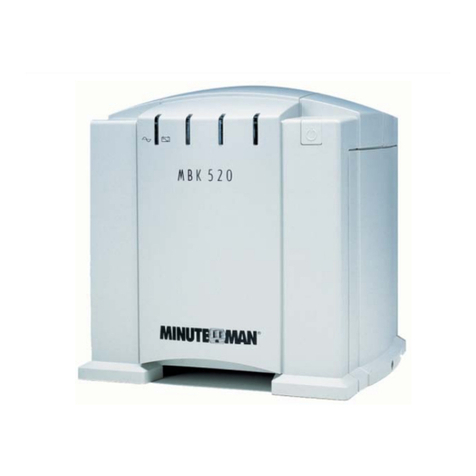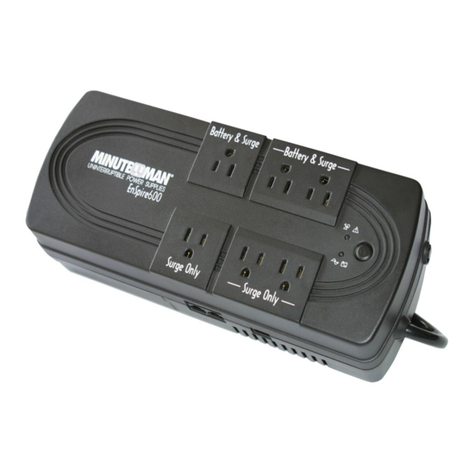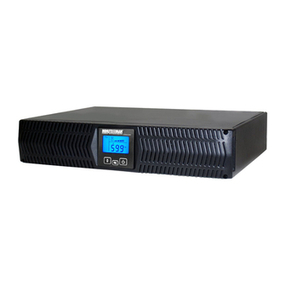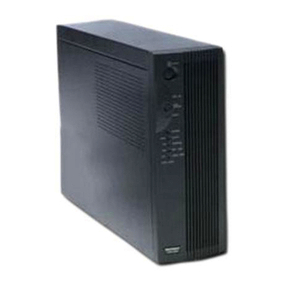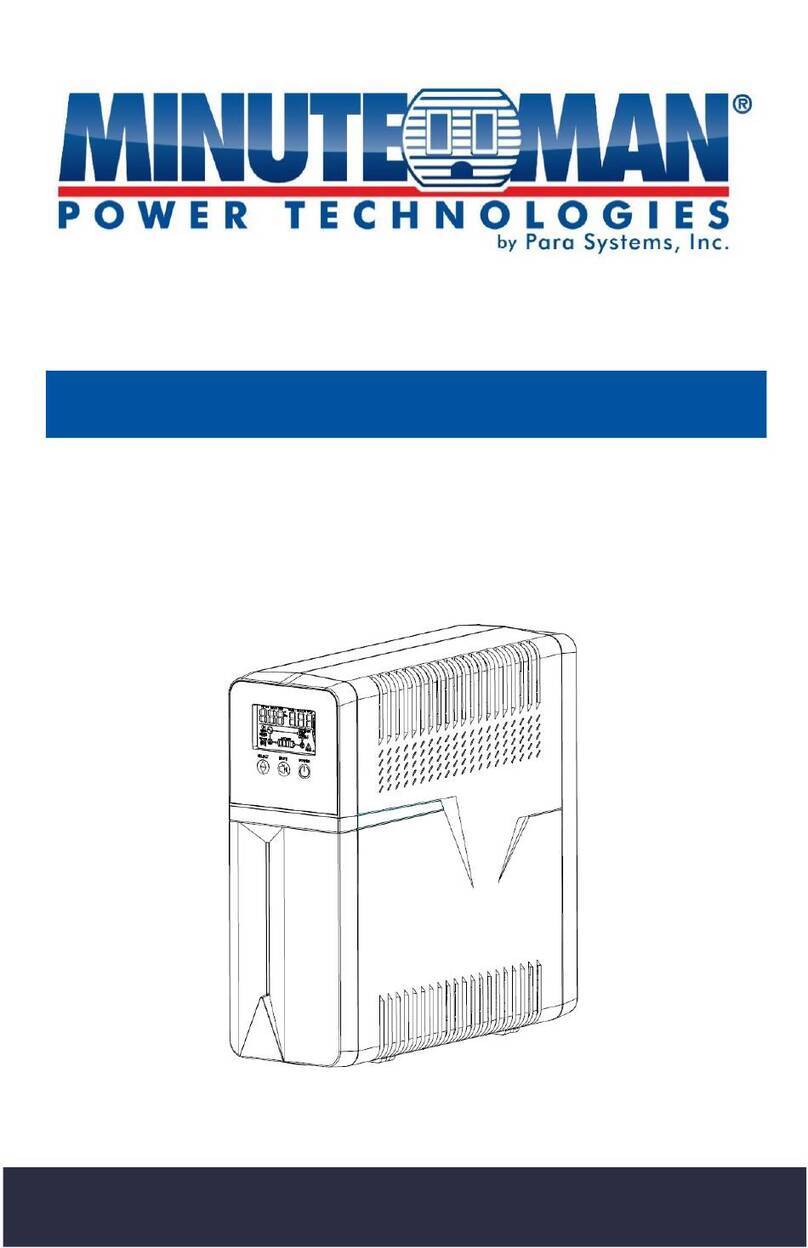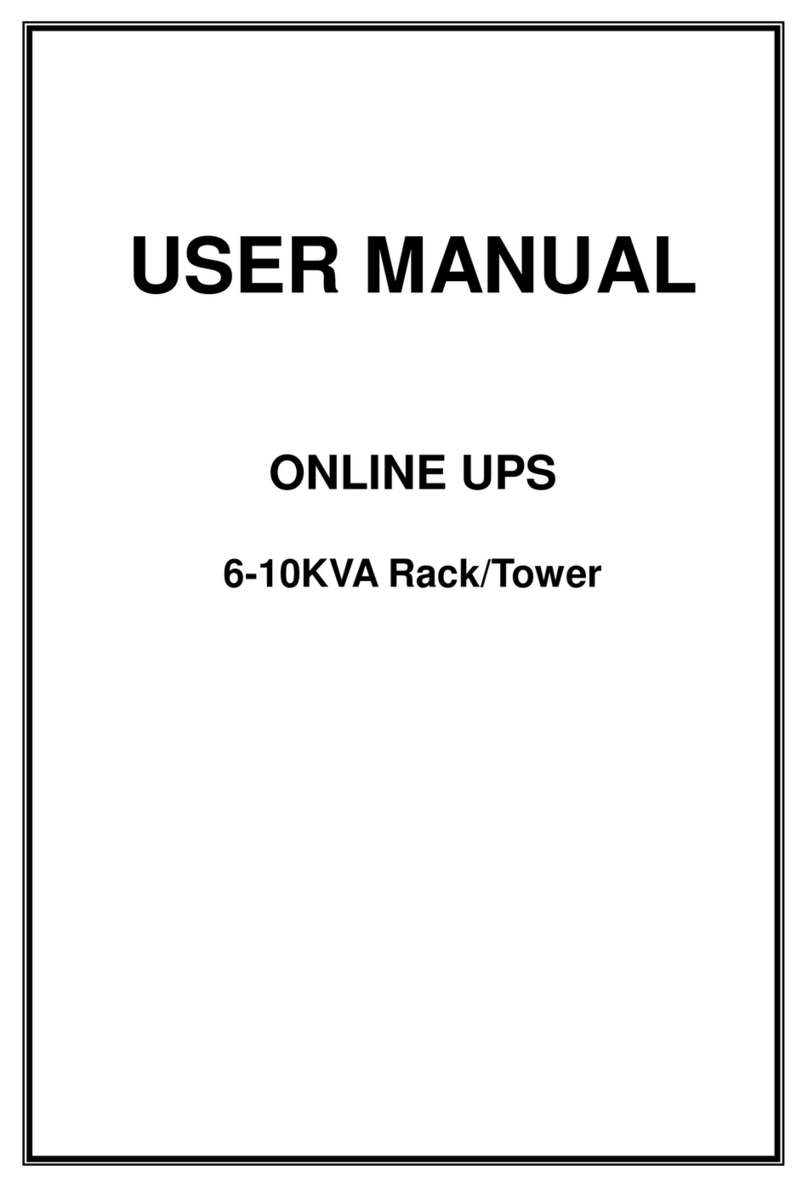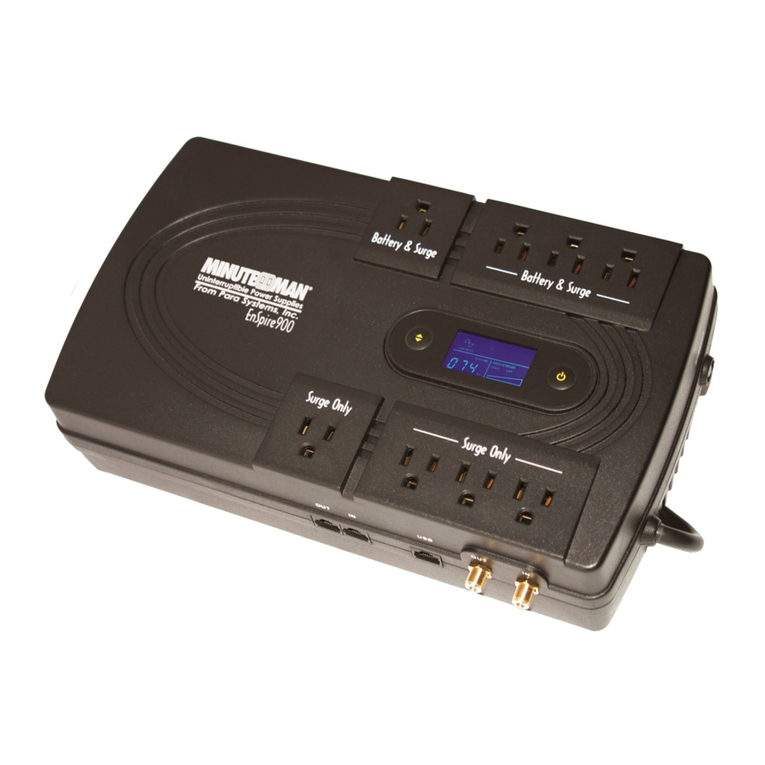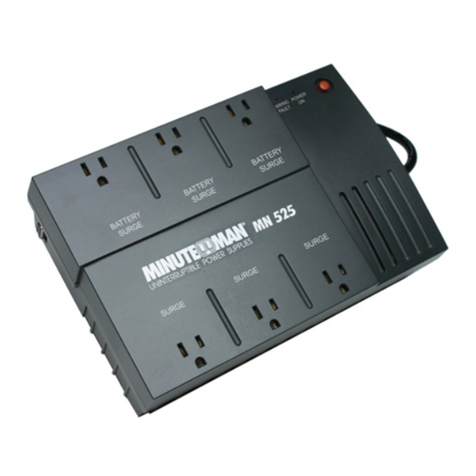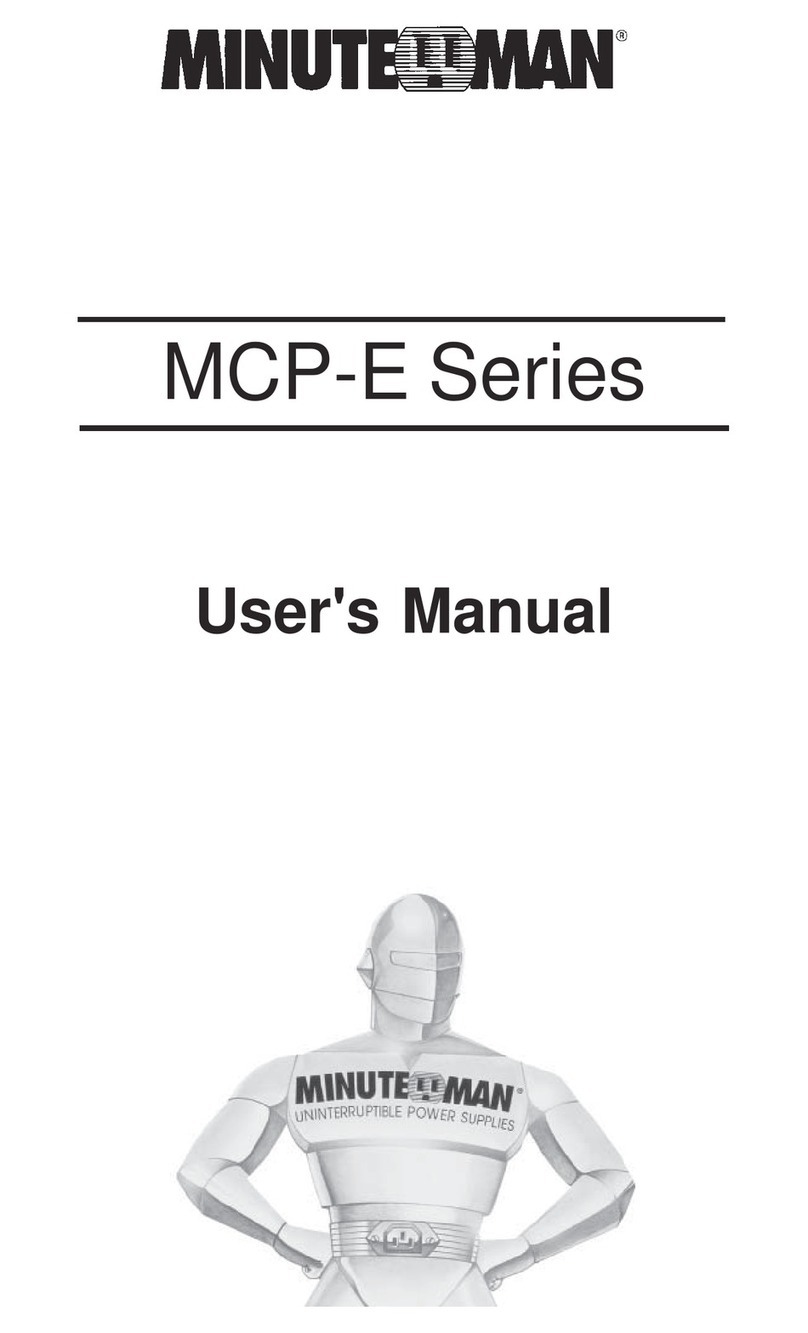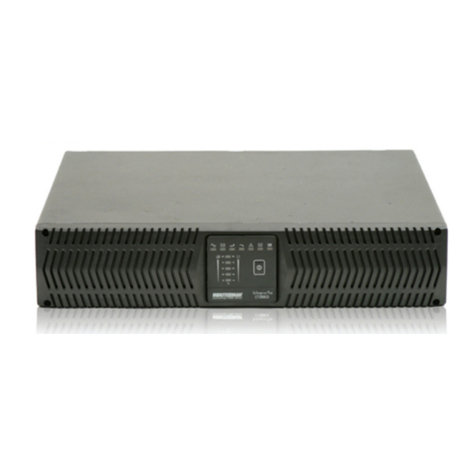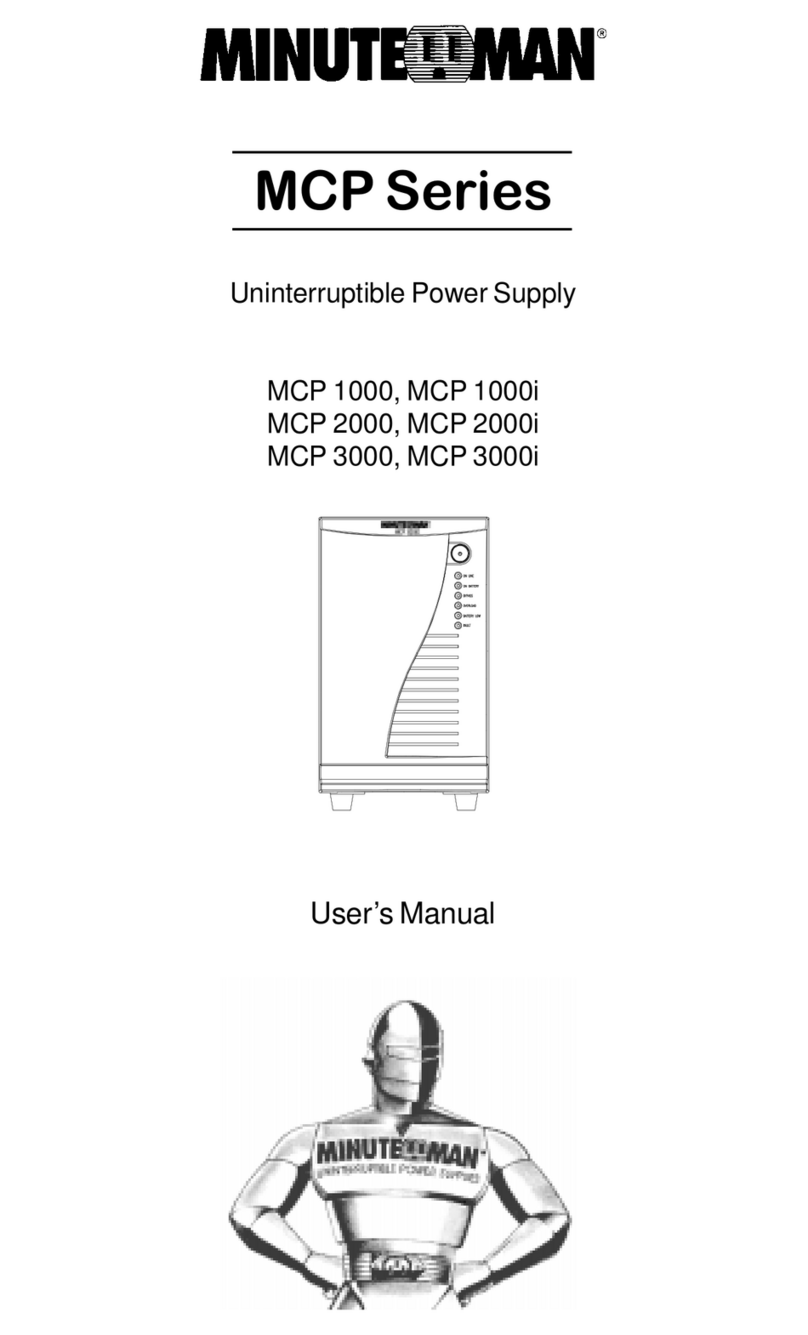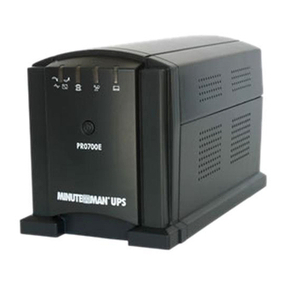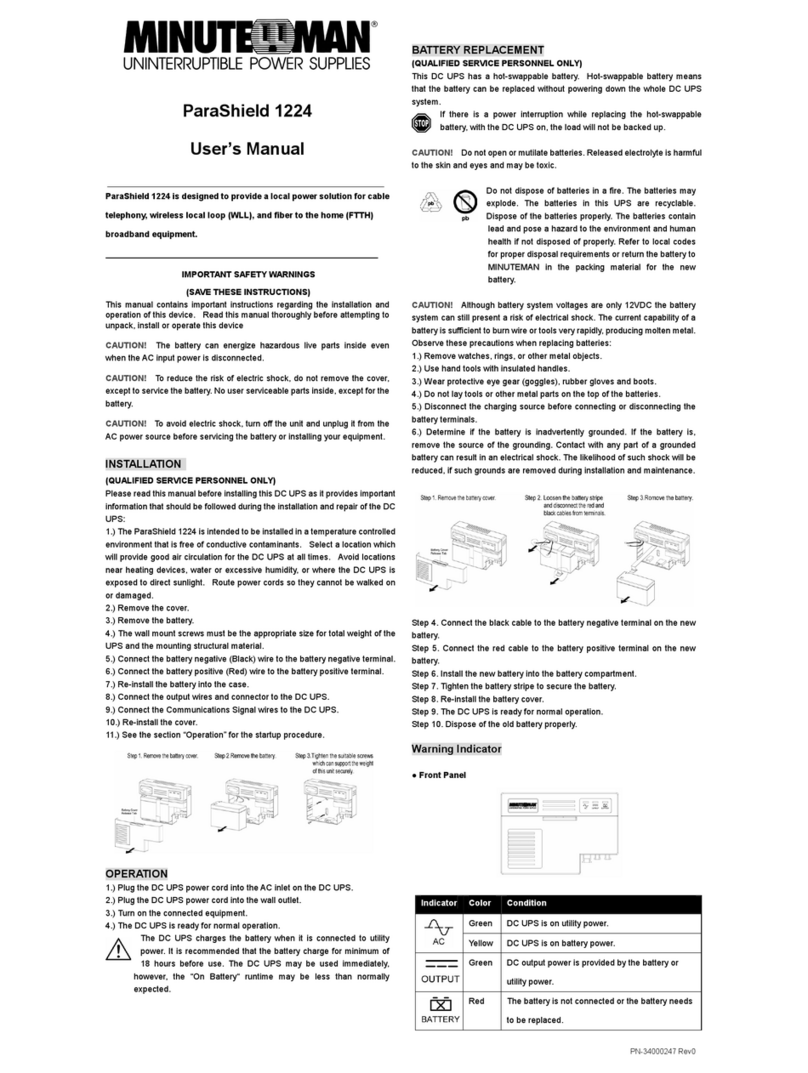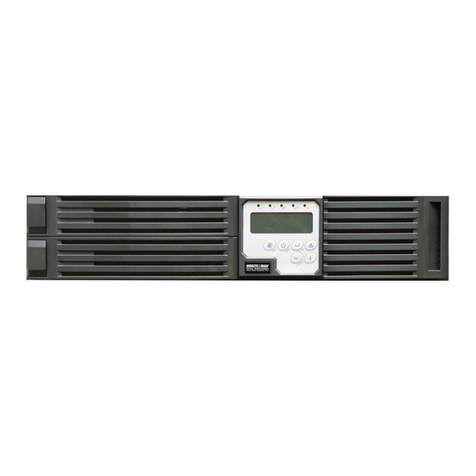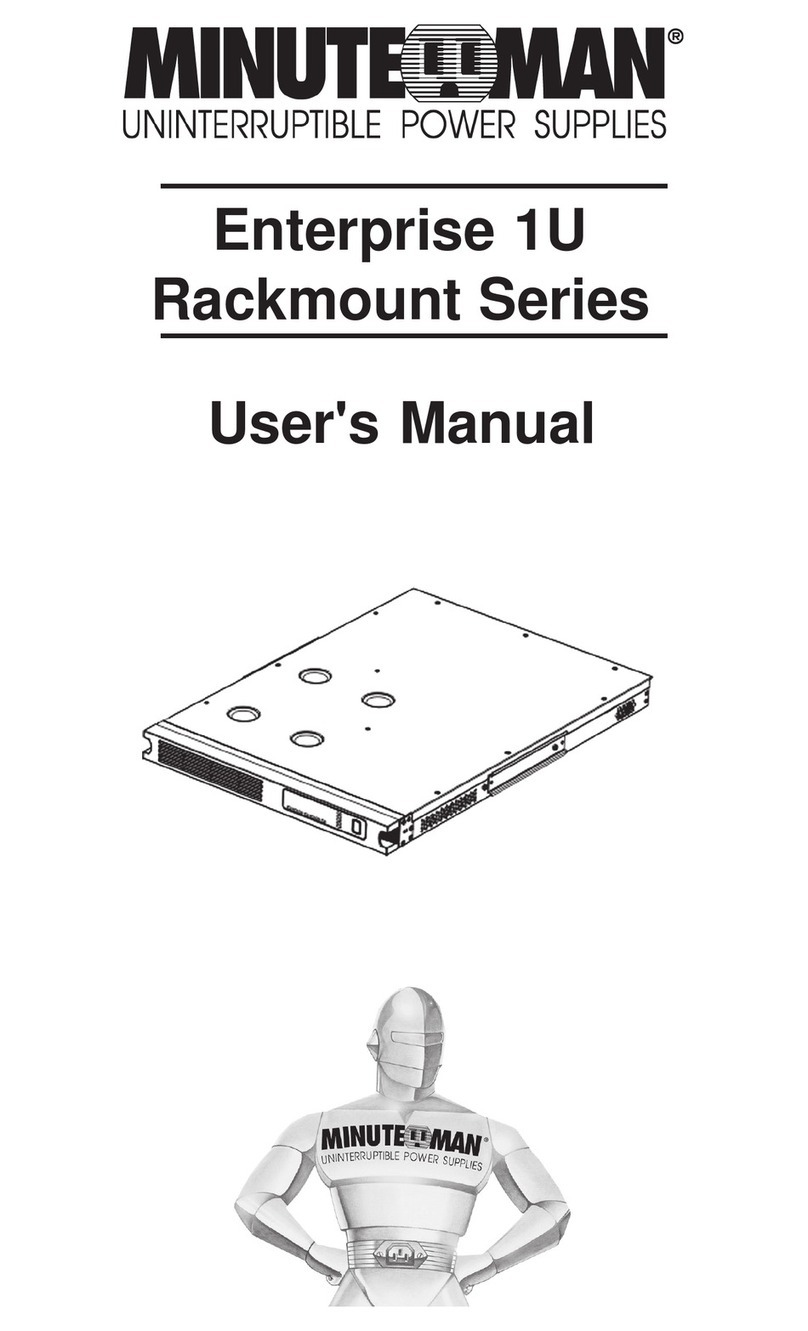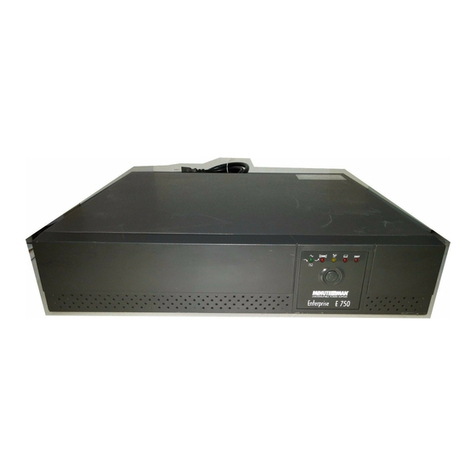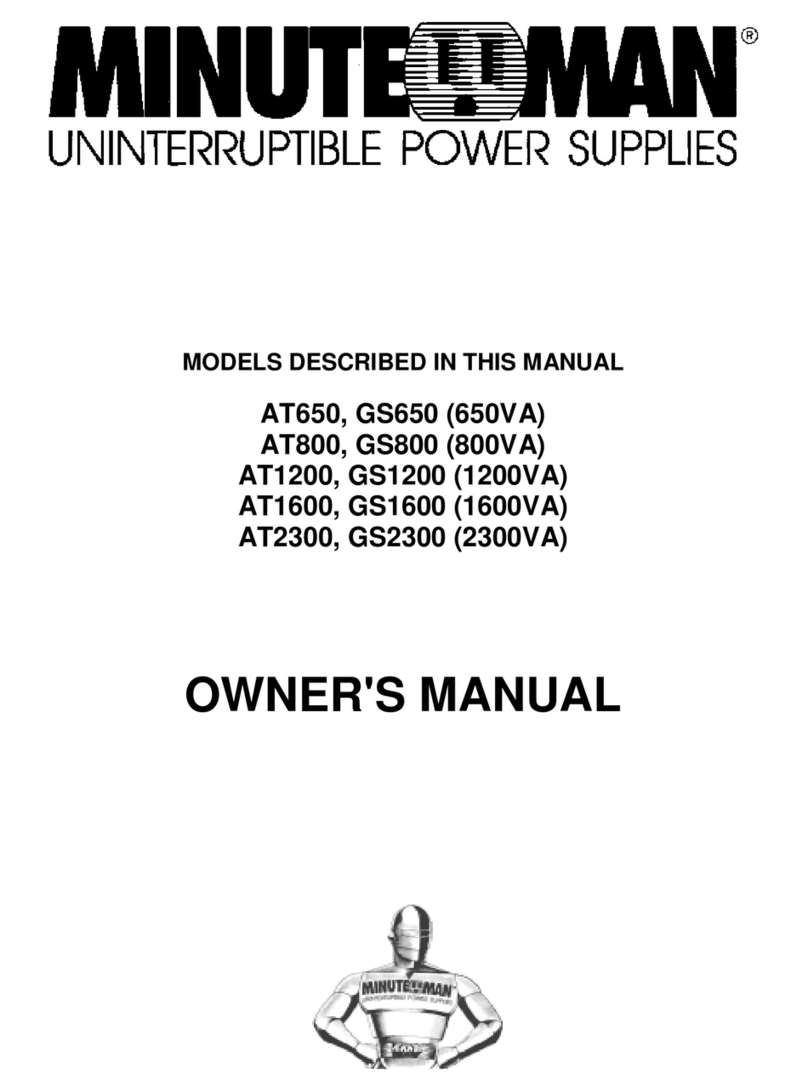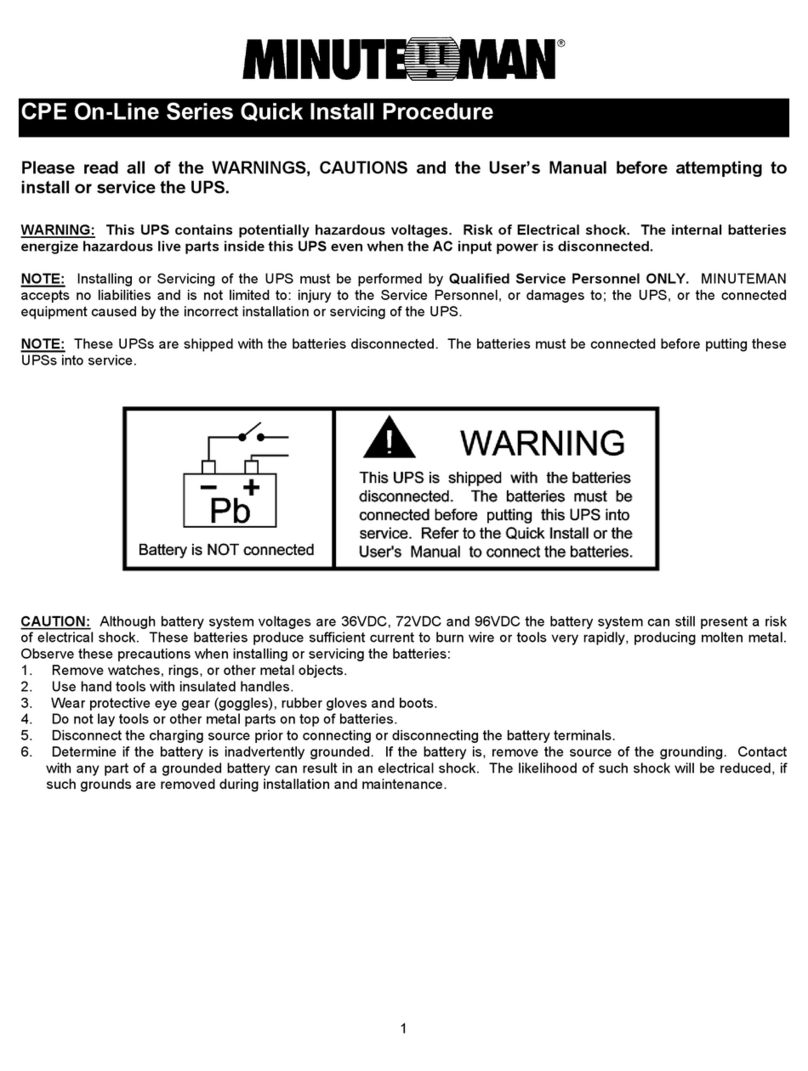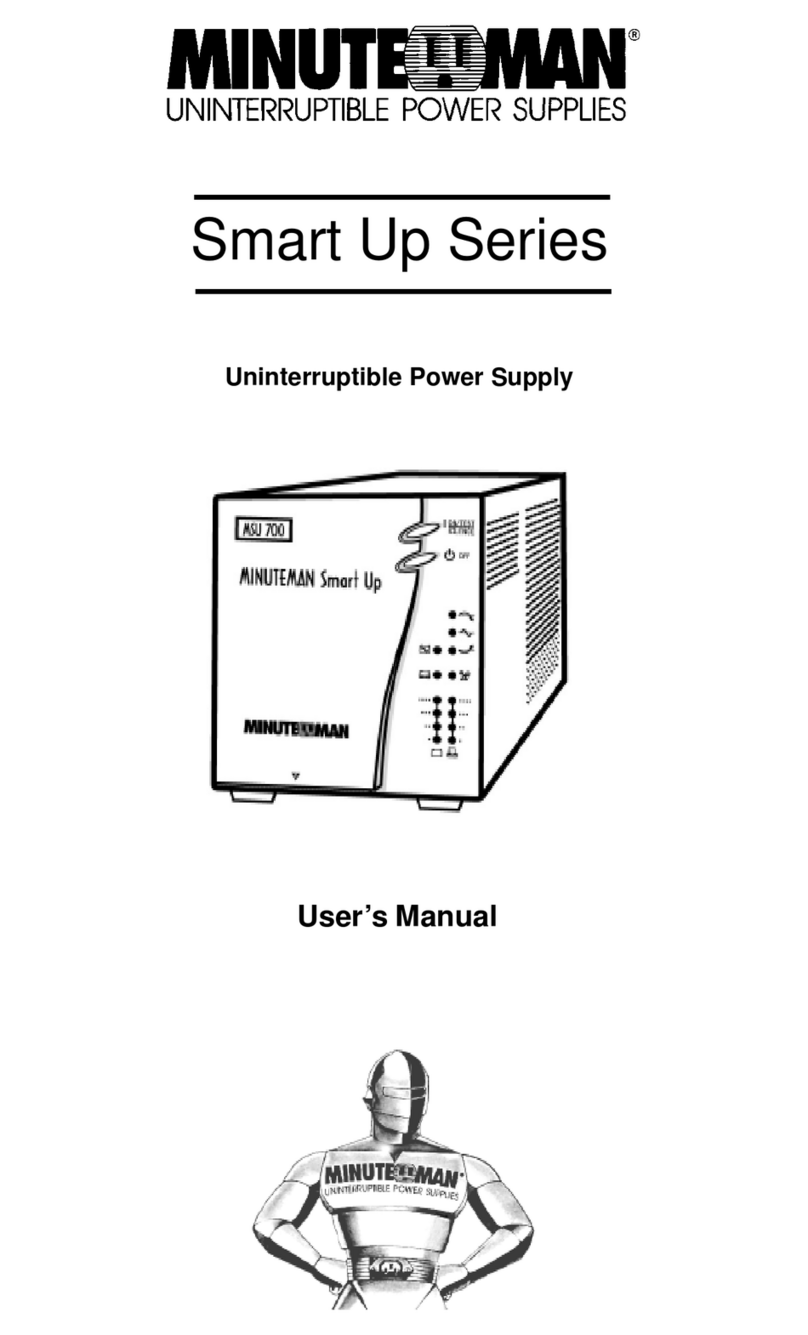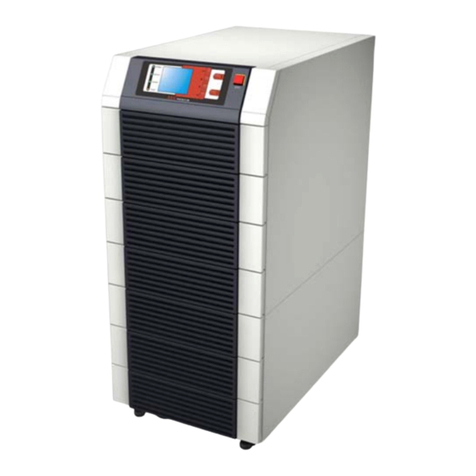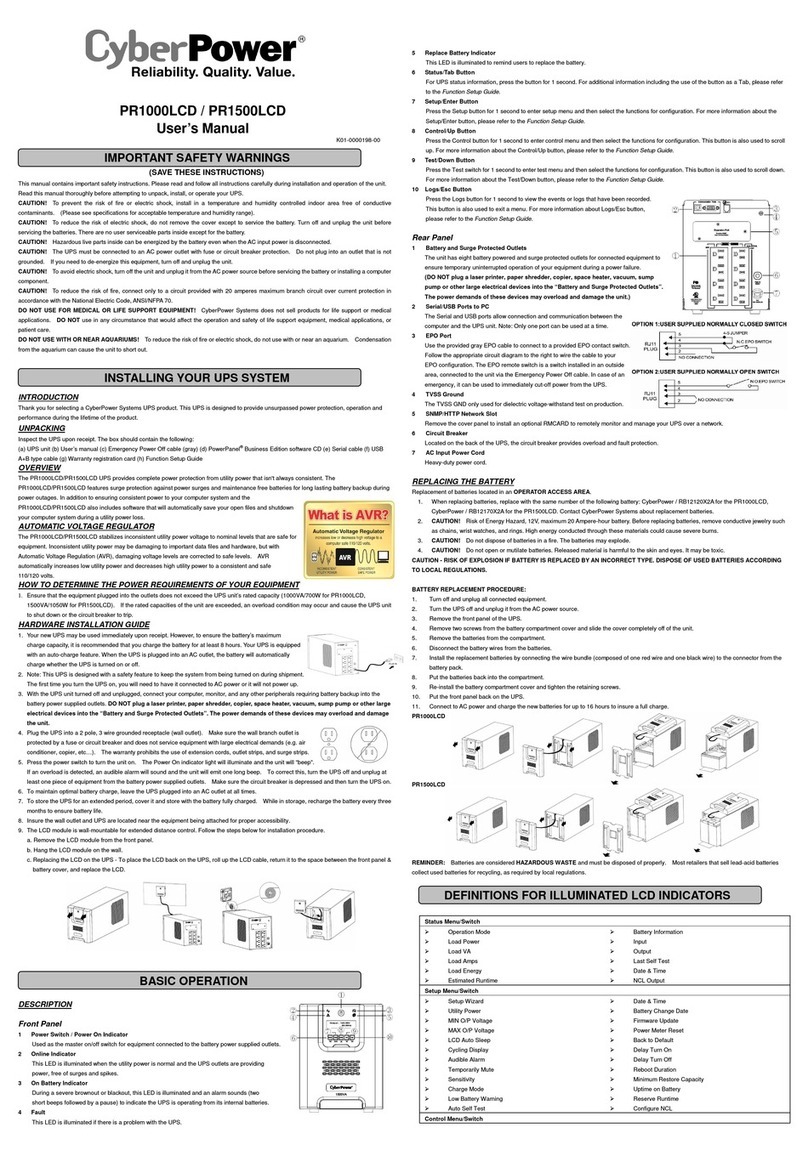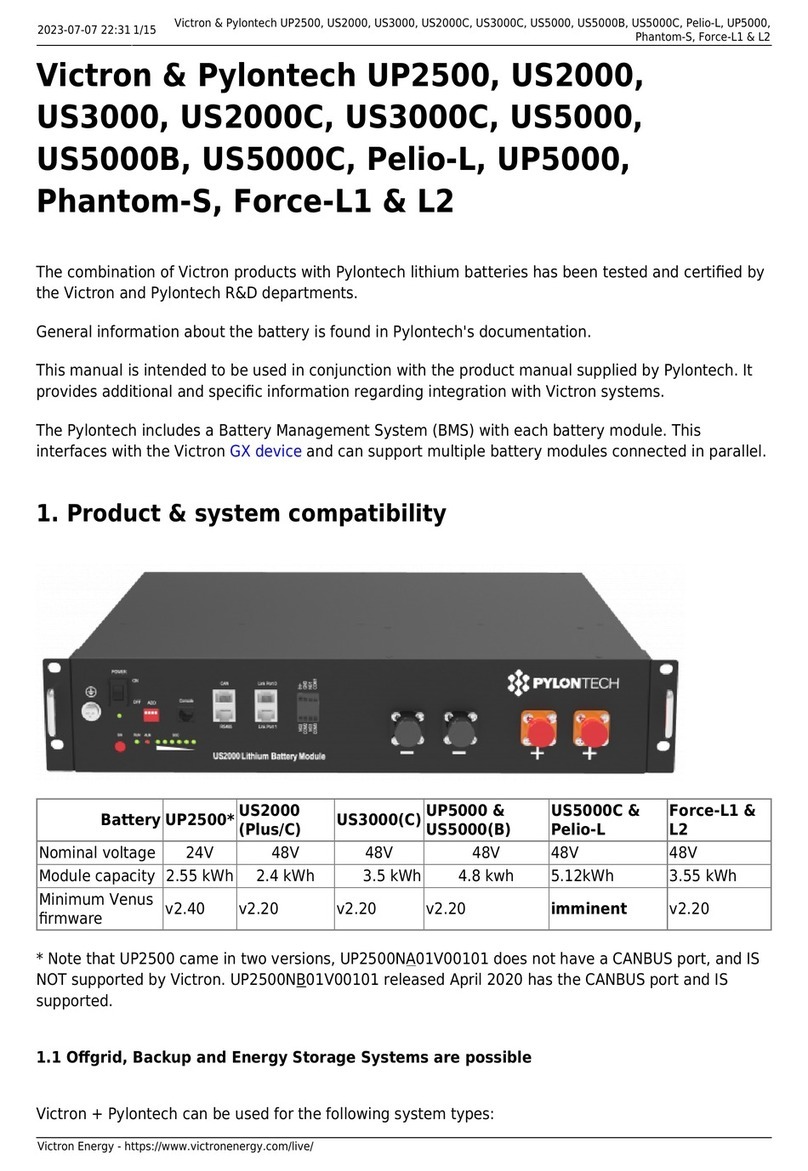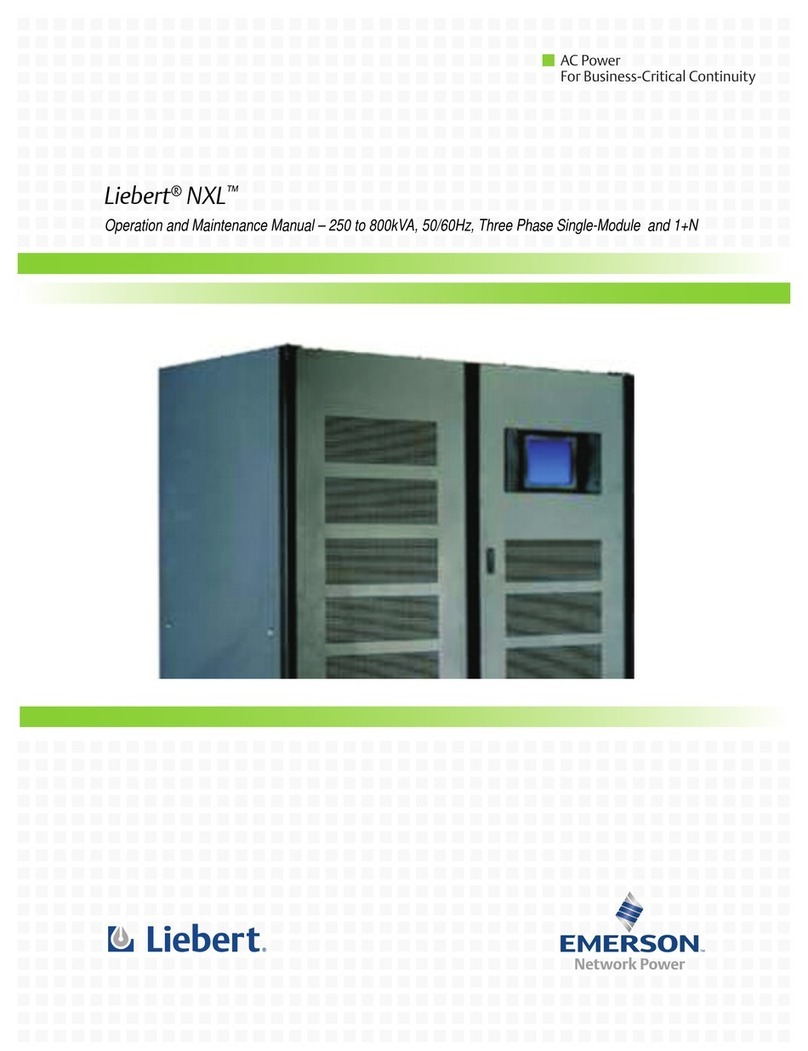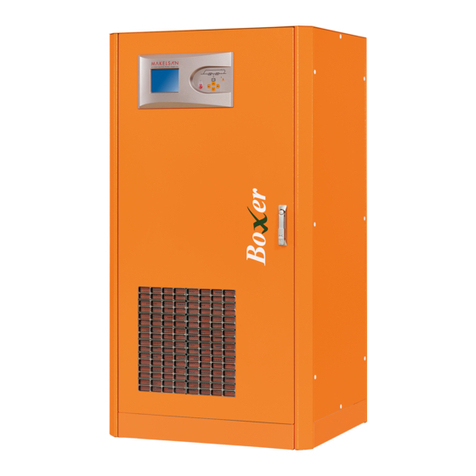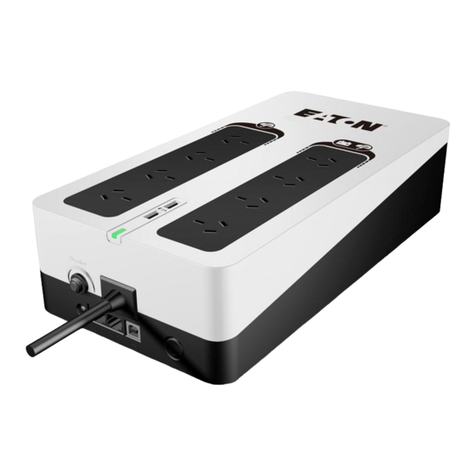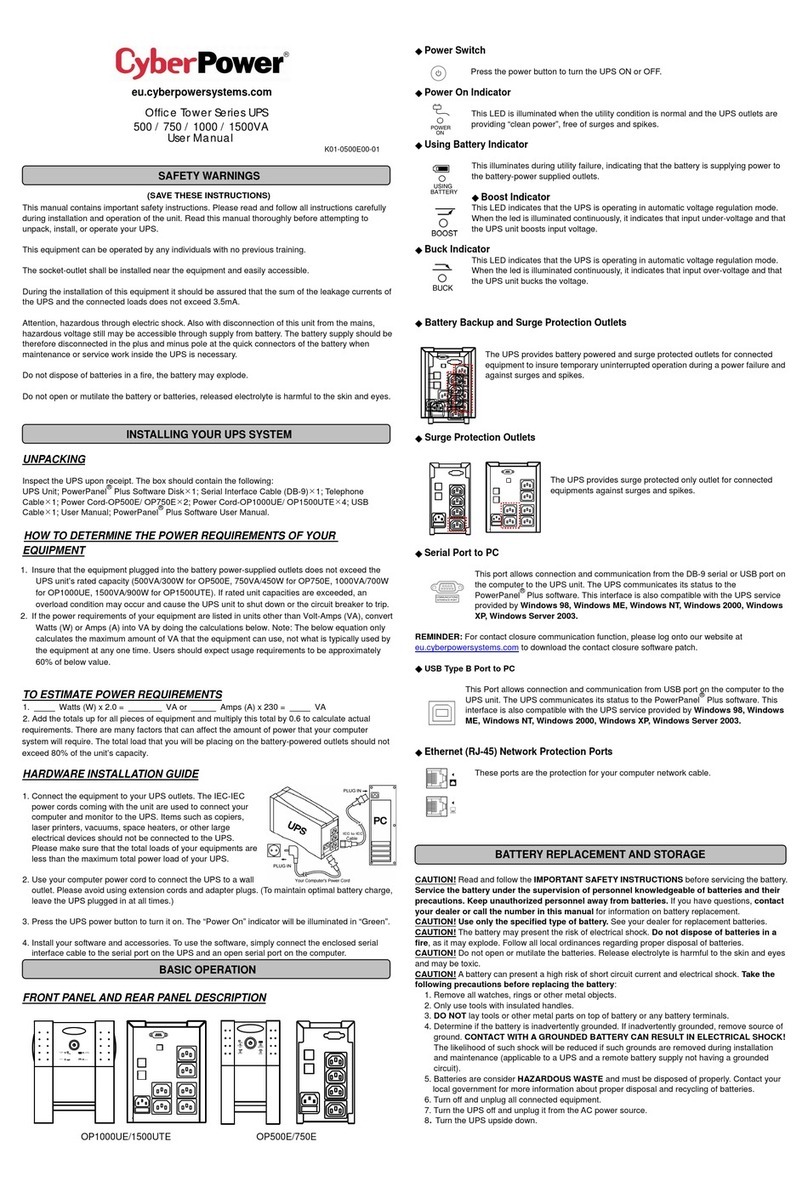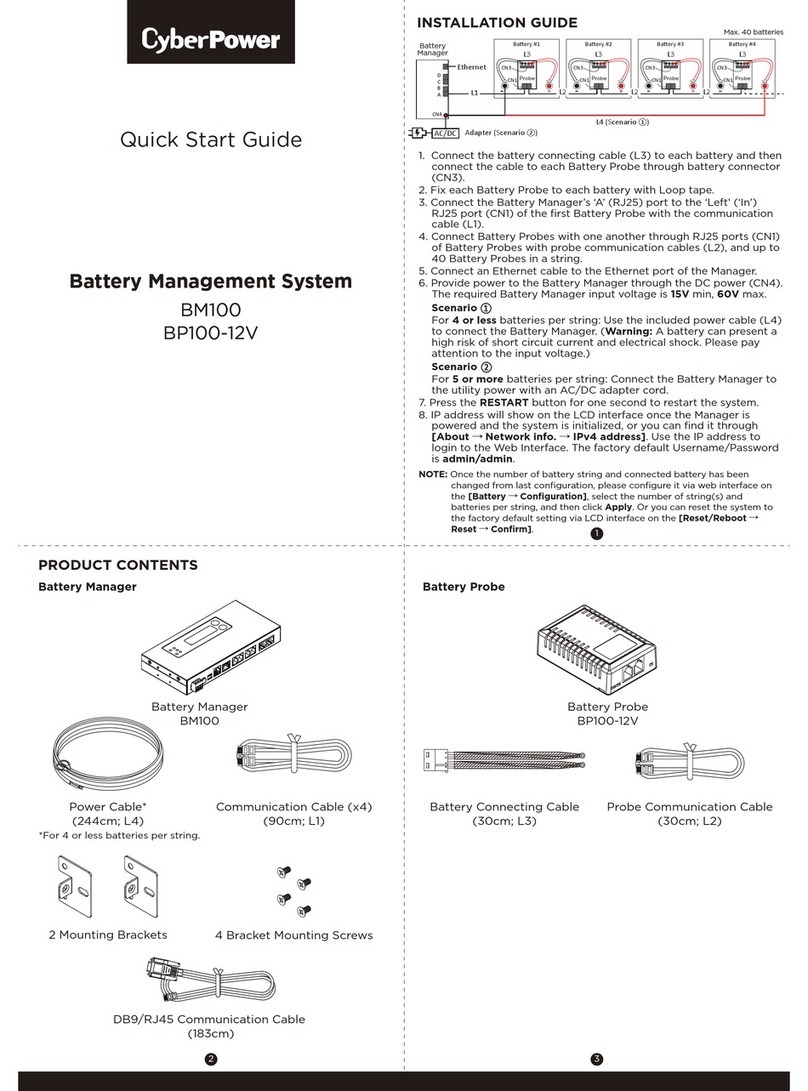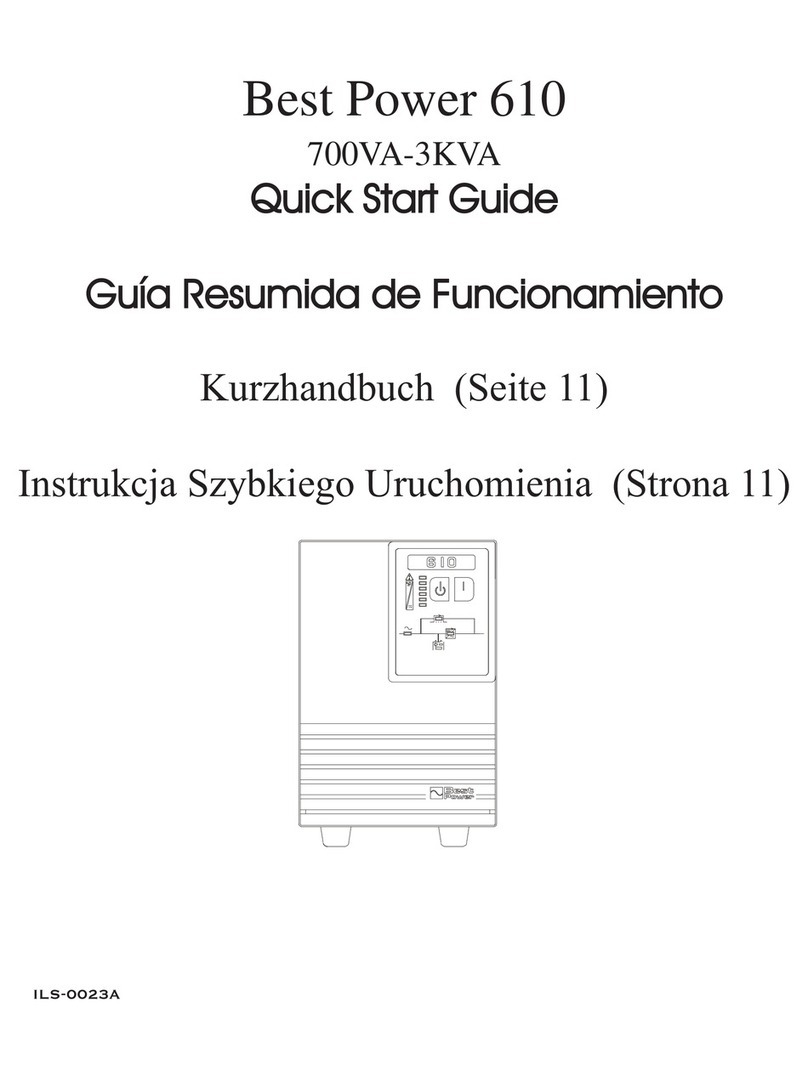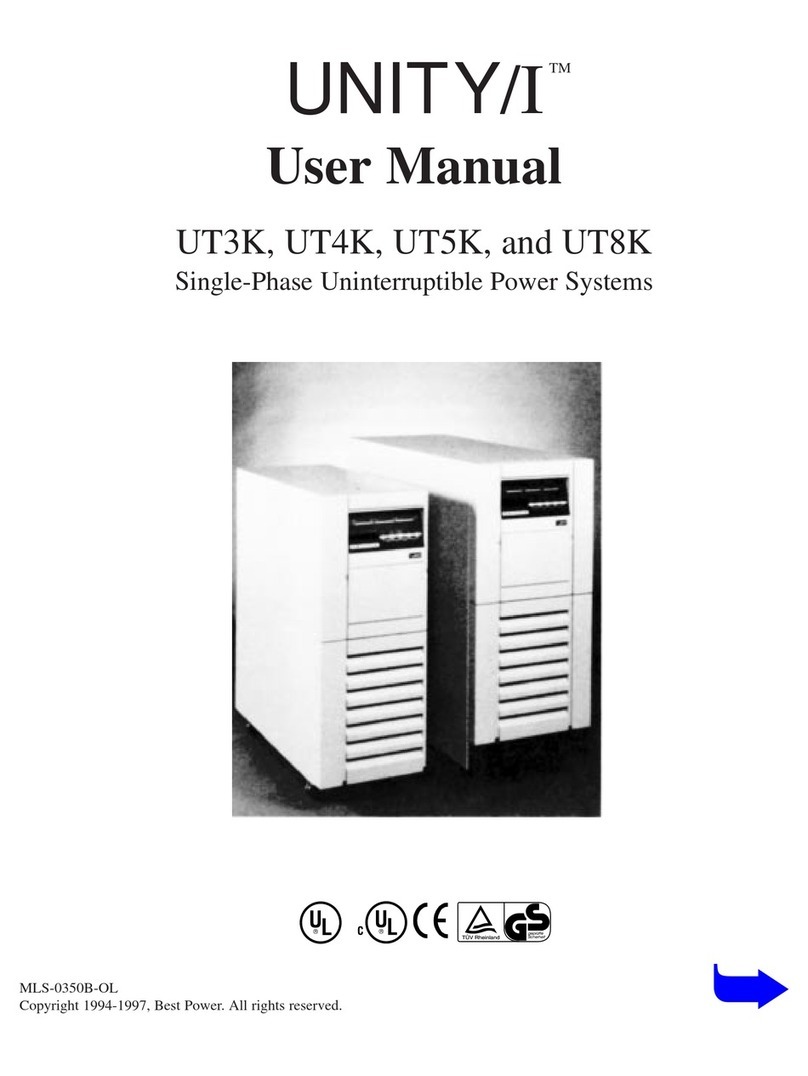3
WARNING: RISK OF ELECTRICAL SHOCK. HAZARDOUS LIVE PARTS
INSIDE THIS POWER SUPPLY ARE ENERGIZED FROM THE BATTERY EVEN
WHEN THE AC INPUT POWER IS DISCONNECTED.
TO DE-ENERGIZE THE OUTPUTS OF THE UPS:
1. IF THE UPS IS ON PRESS THE ON/OFF BUTTON FOR 1 SECOND
2. DISCONNECT THE UPS FROM THE AC POWER OUTLET
3. TO DEENERGIZE THE UPS COMPLETELY, DISCONNECT THE BATTERY.
(SEE SECTION 6 FOR INSTRUCTIONS)
CAUTION! TO REDUCE THE RISK OF ELECTRICAL SHOCK IN CONDI-
TIONS WHERE LOAD EQUIPMENT GROUNDING CANNOT BE VERIFIED, DISCON-
NECT THE UPS FROM THE AC POWER OUTLET BEFORE INSTALLING A COM-
PUTER INTERFACE CABLE. RECONNECT THE POWER CORD ONLY AFTER ALL
SIGNALING CONNECTIONS ARE MADE.
CAUTION! CONNECT THE UPS TO A TWO POLE, THREE WIRE GROUND-
ING AC POWER OUTLET. THE RECEPTACLE MUST BE CONNECTED TO APPROPRI-
ATE BRANCH PROTECTION (CIRCUIT BREAKER OR FUSE). CONNECTION TO ANY
OTHER TYPE OF RECEPTACLE MAY RESULT IN A SHOCK HAZARD AND VIOLATE
LOCAL ELECTRICAL CODES
Para Systems Life Support Policy
As a general policy, Para Systems Inc. (Para Systems) does not recommend the use of any
of its products in life support applications where failure or malfunction of the Para Systems
product can be reasonably expected to cause failure of the life support device or to
significantly affect its safety or effectiveness. Para Systems does not recommend the use
of any of its products in direct patient care. Para Systems will not knowingly sell its
products for use in such applications unless it receives in writing assurances satisfactory
to Para Systems that (a) the risks of injury or damage have been minimized, (b) the
customer assumes all such risks, and (c) the liability of Para Systems Inc. is adequately
protected under the circumstances.
Examples of devices considered to be life support devices are neonatal oxygen analyzers,
nerve stimulators (whether used for anesthesia, pain relief, or other purposes), auto
transfusion devices, blood pumps, defibrillators, arrhythmia detectors and alarms, pacemak-
ers, hemodialysis systems, peritoneal dialysis systems, neonatal ventilator incubators,
ventilators for both adults and infants, anesthesia ventilators, and infusion pumps as well as
any other devices designated as critical by the United States FDA.
Hospital grade wiring devices and leakage current may be ordered as options on many
PARA SYSTEMS UPS systems. PARA SYSTEMS does not claim that units with this
modification are certified or listed as Hospital Grade by PARA SYSTEMS or any other
organization. Therefore, these units do not meet the requirements for use in direct patient
care.
The packing materials that your UPS was shipped in are carefully designed to minimize any
shipping damage. In the unlikely case that the UPS needs to be returned to Minuteman,
please use the original packing material. Since Minuteman is not responsible for shipping
damage incurred when the system is returned, the original packing material is inexpensive
insurance.
PLEASE SAVE THE PACKING MATERIALS!
English
